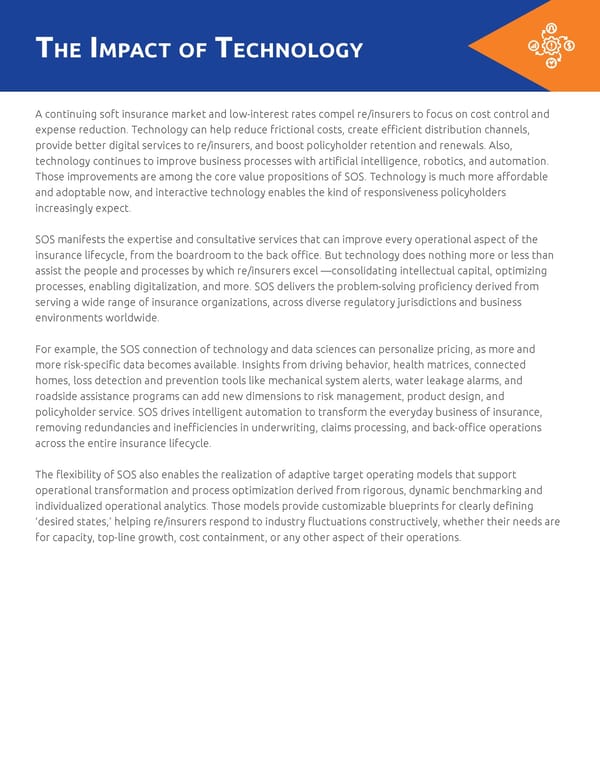the ImPact of technology A continuing soft insurance market and low-interest rates compel re/insurers to focus on cost control and expense reduction. Technology can help reduce frictional costs, create efficient distribution channels, provide better digital services to re/insurers, and boost policyholder retention and renewals. Also, technology continues to improve business processes with artificial intelligence, robotics, and automation. Those improvements are among the core value propositions of SOS. Technology is much more affordable and adoptable now, and interactive technology enables the kind of responsiveness policyholders increasingly expect. SOS manifests the expertise and consultative services that can improve every operational aspect of the insurance lifecycle, from the boardroom to the back office. But technology does nothing more or less than assist the people and processes by which re/insurers excel —consolidating intellectual capital, optimizing processes, enabling digitalization, and more. SOS delivers the problem-solving proficiency derived from serving a wide range of insurance organizations, across diverse regulatory jurisdictions and business environments worldwide. For example, the SOS connection of technology and data sciences can personalize pricing, as more and more risk-specific data becomes available. Insights from driving behavior, health matrices, connected homes, loss detection and prevention tools like mechanical system alerts, water leakage alarms, and roadside assistance programs can add new dimensions to risk management, product design, and policyholder service. SOS drives intelligent automation to transform the everyday business of insurance, removing redundancies and inefficiencies in underwriting, claims processing, and back-office operations across the entire insurance lifecycle. The flexibility of SOS also enables the realization of adaptive target operating models that support operational transformation and process optimization derived from rigorous, dynamic benchmarking and individualized operational analytics. Those models provide customizable blueprints for clearly defining ‘desired states,’ helping re/insurers respond to industry fluctuations constructively, whether their needs are for capacity, top-line growth, cost containment, or any other aspect of their operations.
 The New Operating Model Page 7 Page 9
The New Operating Model Page 7 Page 9